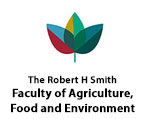The participants in each competition will be allowed to study the results of the estimation set. Their goal will be to develop a model that will predict the results of the competition set. In order to qualify to the competition, the model will have to capture all 14 choice phenomena of Table 1. The model should be implemented in a computer program that reads the parameters of the problems as an input and predicts the proportion of choices of Option B as an output. Thus, we use the generalization criterion methodology (see Busemeyer & Wang, 2000).
Additional information concerning the competition can be found in the following pages:
- The “registration” and submission page explains the actions that have to be taken in order to participate in the competition.
- The “problem selection algorithm” page presents the algorithm that was used to select the problems in the estimation set, and is used to select the problems in the competition set.
- The “Method” page presents the experimental method.
- The “aggregated results” page presents the problems that were studied in the estimation set and the aggregated results.
- The “raw data” pages present the raw data for each of the participants.
- The “competition rules” page explains the time schedule, and the required features of the submissions.
- The “baseline model” page presents examples of possible submissions to the competition.



